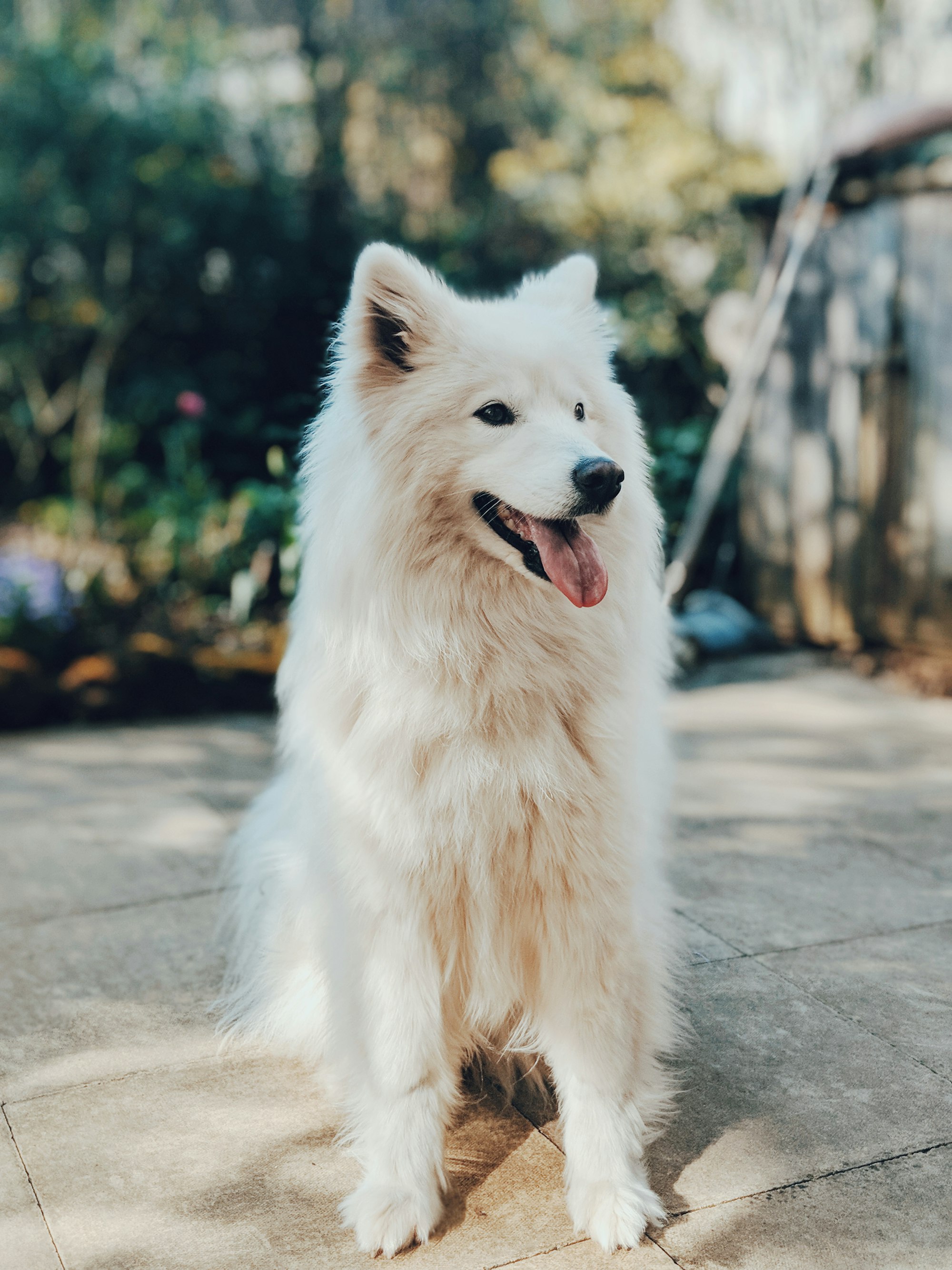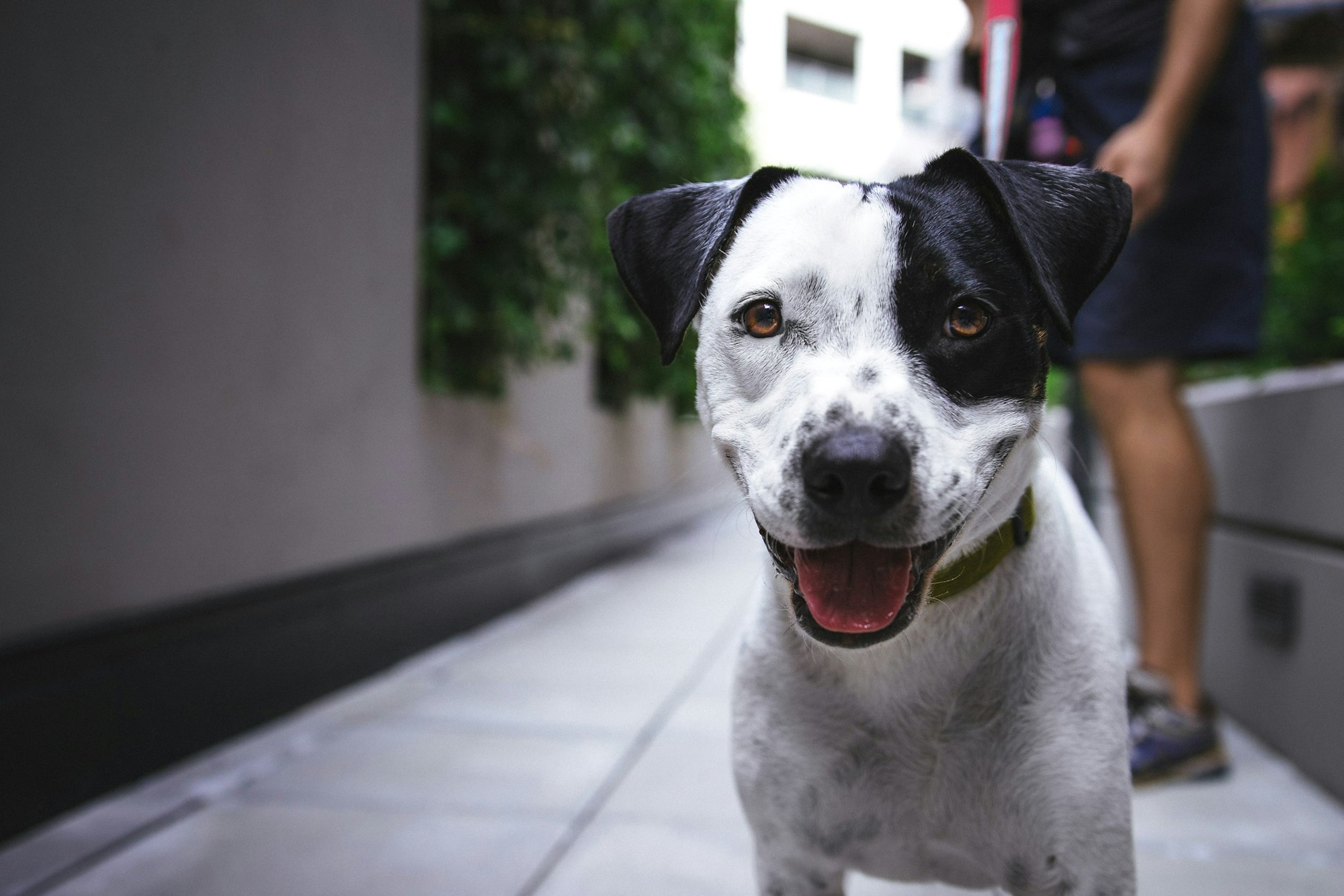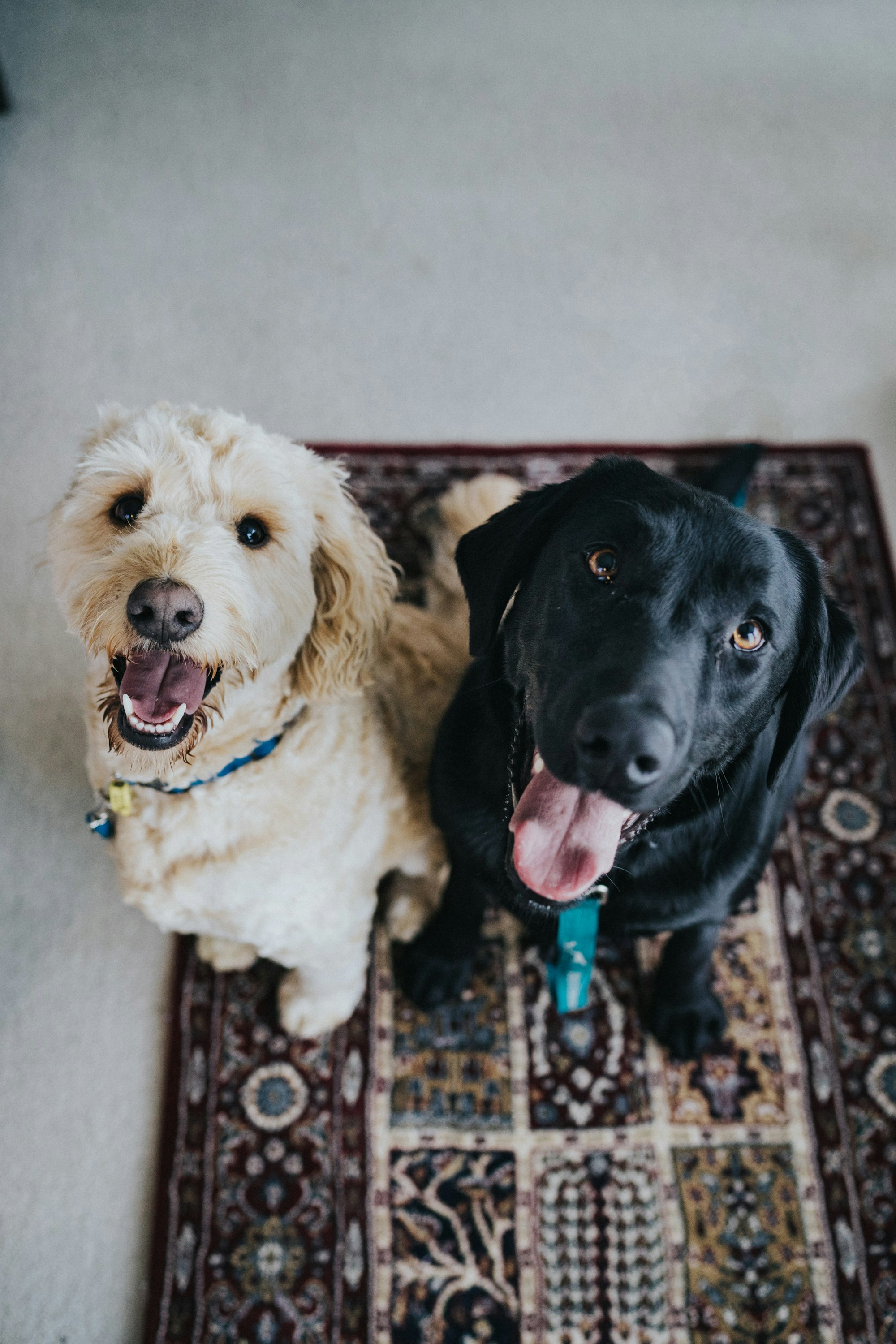Changing your dog's name may become necessary for various reasons. Whether you've recently adopted a dog, experienced a change in ownership, or want to dissociate the previous name from negative experiences, the process of changing your dog's name can be accomplished with patience and consistency. Here is a step-by-step guide on how to change your dog's name effectively.
1. Choose a New Name: Select a name that is simple, distinct, and easy for your dog to recognize.
2. Start with Basic Name Recognition Training: Use positive reinforcement techniques to associate the new name with rewards or treats.
3. Use Positive Reinforcement: Reward your dog every time they respond to their new name to reinforce the association.
4. Gradually Phase Out the Old Name: Slowly reduce the use of the old name while increasing the use of the new name.
5. Consistency Is Key: Ensure everyone in the household uses the new name consistently to avoid confusion.
6. Patience and Persistence: Understand that changing a dog's name may take time, so be patient and persistent in the training process.
To successfully change your dog's name, consider keeping the new name simple and distinctive, and associate it with positive experiences to create a positive association. Consistency with the new name is vital to help your dog understand and respond to the change. While challenges such as confusion, slower response, or resistance may arise, these can be addressed with time, training, and reinforcement.
Key takeaways:
- Choose a new name: When changing your dog's name, select a new name that is simple and distinctive to avoid confusion and aid in training.
- Start with basic name recognition training: Begin by teaching your dog to respond to the new name using positive reinforcement techniques.
- Be consistent and patient: Changing your dog's name requires consistency and persistence. Gradually phase out the old name while consistently using the new name to reinforce the change.
Why Would You Want to Change Your Dog's Name?
There are several reasons why you might want to change your dog's name. One common reason is if you have adopted a dog and they already have a name that you don't like or that doesn't suit them. Another reason could be if your dog's current name sounds too similar to another word or command, causing confusion. Some people choose to change their dog's name as a way of bonding with them and giving them a fresh start in their new home. It's important to remember that dogs are adaptable and can learn a new name with some training and patience.
Fact: Dogs can learn to recognize and respond to their new name within a few weeks of consistent use.
When Should You Consider Changing Your Dog's Name?
Considering whether or not to change your furry friend's name? Let's dive into the circumstances that might prompt you to reconsider. From adopting a pup from a shelter or rescue to experiencing a change in ownership, various situations can arise where renaming becomes a topic of consideration. Exploring the connection between a previous name and negative experiences, we'll unravel the potential reasons behind this decision. So, when is it truly appropriate to contemplate changing your dog's name? Let's find out.
Adoption from a Shelter or Rescue
When adopting a dog from a shelter or rescue, it may be necessary to change their name in order to give them a fresh start. To make this process easier, it is recommended to follow a step-by-step guide. Start by choosing a new name that is both simple and distinctive. Then, begin basic name recognition training using positive reinforcement, gradually phasing out the old name.
Consistency and patience are crucial throughout this process. To ensure success, make sure to associate the new name with positive experiences and avoid using the old name. While challenges may arise, such as confusion or resistance to the new name, sticking with the process and utilizing rewards-based dog training methods can greatly help your newly adopted dog adjust to their new identity.

Change in Ownership
When it comes to a change in ownership, one important consideration is renaming the dog. There are several reasons why changing a dog's name is essential during this transition:
- Transition: Giving the dog a new name helps them smoothly adjust to their new environment and identity.
- Negative associations: If the dog's previous name is connected to a negative experience, changing it can aid in their healing process and moving forward.
- Bonding: Renaming the dog provides an opportunity for the new owner to create a fresh bond and connection.
- Training: A new name can simplify the training process by reducing confusion and helping the dog stay focused.
Previous Name Associated with Negative Experiences
Changing a dog's name becomes necessary when the previous name is associated with negative experiences in the dog's life. This can be due to abuse, neglect, or any other traumatic event linked to the previous name. To help the dog adjust to a new name, follow these steps:
- Choose a new name that is distinct and unrelated to the previous name.
- Start basic name recognition training, using positive reinforcement and treats.
- Gradually phase out the old name and consistently use the new name.
- Reward the dog for responding to the new name and associate it with positive experiences.
- Be patient and persistent during the transition process.
A shelter dog named Max was renamed Charlie after being adopted by a loving family. The previous name brought back memories of mistreatment, hindering his training progress. By incorporating rewards-based dog training and using the new name often, Charlie was able to overcome his past and embrace his new life as a cherished family member.
Step-by-Step Guide on How to Change Your Dogs Name
Embarking on a journey to change your dog's name? Look no further! In this step-by-step guide, we'll walk you through the process, leaving no paw unturned. Discover how to choose a new name that suits your furry friend, master the art of basic name recognition training, and learn the power of positive reinforcement. We'll also unveil the secrets to gradually phasing out the old name and why consistency is the key to success. Get ready for a fun and rewarding endeavor as we dive into the world of renaming our beloved canine companions.
Choose a New Name
When choosing a new name for your dog, carefully select a name that incorporates the factors of the dog's personality, appearance, and any personal significance to you. Ensure that the name you choose is easily pronounceable and consists of two syllables, as research suggests that dogs respond better to shorter names. It is vital to pick a name that you are comfortable with repeating and that you believe aligns with your dog's new identity. Remember to frequently use the new name when addressing your dog and associate it with positive experiences, such as treats or praise. By following these steps, you can ensure a seamless transition to your dog's new name.
Start with Basic Name Recognition Training
- To start with basic name recognition training for your dog, choose a new name that is distinct and easy for your dog to recognize.
- To get their attention, begin by saying your dog's new name in a clear and upbeat tone.
- Ensure positive reinforcement, such as treats or praise, is used every time your dog responds to their new name.
- Over time, gradually phase out the old name by using it less frequently.
- In training, consistency is key, so make sure everyone in the household uses the new name consistently.
- Remember to be patient and persistent, as it may take some time for your dog to fully adjust to their new name.
Remember, the goal is to associate your dog's new name with positive experiences and create a smooth transition to their new identity.
Use Positive Reinforcement
Using positive reinforcement is an effective way to change your dog's name. Here are some steps to follow:
- Choose a new name that is simple and distinctive.
- Start with basic name recognition training, utilizing treats and praise to associate the new name with positive experiences.
- Gradually phase out the old name, employing the new name consistently in all interactions with your dog.
- Be patient and persistent, as it may take time for your dog to fully adjust to the new name.
By utilizing positive reinforcement, you can make the process of changing your dog's name a smooth and rewarding experience.
Fun fact: Dogs are capable of learning and responding to hundreds of words, so with time and practice, your dog will become accustomed to their new name.
Gradually Phase Out the Old Name
To gradually phase out the old name of your dog, here are the steps you should follow:
- Choose a new name that is distinct and easy to pronounce.
- Start with basic name recognition training, employing the new name and rewarding your dog when they respond to it.
- Use positive reinforcement to associate the new name with positive experiences, such as treats or praise.
- Gradually phase out the old name by using it less frequently and the new name more often.
- Be consistent in using the new name and avoid using the old name to prevent confusion.
- Have patience and persistence during the process, as it may take time for your dog to fully adjust to their new name.
Remember to make the transition as smooth as possible by following these suggestions. With time and consistency, your dog will become accustomed to their new name and respond to it effectively.
Consistency Is Key
Consistency is key when changing your dog's name. Here are some tips to maintain absolute consistency throughout the process:
- Choose a new name that is easy to pronounce and distinct from the old name.
- Start with fundamental name recognition training, consistently rewarding your dog whenever they respond to their new name.
- Utilize positive reinforcement, such as treats and praise, to consistently associate the new name with positive experiences.
- Gradually phase out the old name, consistently using the new name more frequently as your dog becomes familiar with it.
- Be unwaveringly consistent with using the new name in all interactions with your dog.
- Patience and persistence are absolutely necessary, as it may take some time for your dog to fully adjust to their new name.
By diligently following these consistency-focused steps, you can successfully change your dog's name and help them adjust to their new identity.
Patience and Persistence
To successfully change your dog's name, patience and persistence are key. Dogs may take time to adjust and respond to their new name, especially if they have been called by a different name for a long time. Consistently use the new name during training sessions and daily interactions. Incorporate positive reinforcement techniques, such as giving treats and praising your dog when they respond to their new name. Remember to be patient and understanding if your dog takes time to learn their new name. With time and consistent effort, your dog will eventually become accustomed to their new identity.
Tips for Successfully Changing Your Dog's Name
Changing your dog's name can be an exciting and rewarding process. In this section, we'll explore some valuable tips that will help you successfully transition your furry friend to a new name. From keeping the new name simple and distinctive to associating it with positive experiences, and being consistent with its use, we'll provide you with practical advice backed by experts in the field. Get ready to embark on this name-changing journey and create a stronger bond with your canine companion!

Keep the New Name Simple and Distinctive
When changing your dog's name, it's important to keep the new name simple and distinctive. This will help your furry friend recognize and respond to their new name more easily. Here are some suggestions to keep the new name simple and distinctive:
| - Choose a name with two syllables, as it is easier for dogs to understand and remember. |
| - Avoid names that rhyme with commands or other words commonly used during training. |
| - Select a name that is different from any other pets or family members' names to avoid confusion. |
By following these tips, you can ensure a smooth transition and help your dog adapt to their new name more effectively.
Associate the New Name with Positive Experiences
- Incorporate the keyword ""Associate the New Name with Positive Experiences"" naturally into the text: Associate the new name with positive experiences to help your dog make a positive connection with their new name.
- Use the new name when engaging in activities your dog enjoys, such as playing, going for walks, or receiving treats to further reinforce the positive association.
- Praise and reward your dog when they respond to their new name, reinforcing the positive association and making them more likely to associate it with positive experiences.
- Avoid using the new name in situations that may cause stress or anxiety for your dog, as this could create negative associations with the name.
- Consistency is key to reinforcing the positive association. Continuously use the new name consistently and avoid using the old name to prevent confusion.
- Patience and persistence are necessary in the process of associating the new name with positive experiences. It may take time for your dog to fully adjust to their new name, but eventually, they will make the connection.
Be Consistent with the New Name
Being consistent with the new name is essential when it comes to changing your dog's name. By consistently using the new name, you will help your dog learn and respond to their new identity. Here are a few tips to ensure consistency:
- Be consistent in using the new name during all interactions with your dog.
- Avoid using the old name or any variations that may confuse your dog.
- Incorporate the new name frequently during training sessions, walks, and playtime.
- Reinforce the new name with positive experiences, such as rewarding good behavior and praising enthusiastically.
- Stick with the new name even if your dog doesn't immediately respond. Over time, they will become accustomed to it.
Remember, consistency and patience are key in the process of changing your dog's name. By staying committed to it and consistently using the new name, you will help your dog transition smoothly to their new identity.
Fun Fact: Dogs can recognize the sound of their own name, even if it's in a different language or spoken by a stranger.

Common Challenges and Solutions in Changing a Dog's Name
Changing your dog's name can be a challenging process, but understanding the common challenges and their corresponding solutions can make it much easier. From confusion and slower response to forgetting the old name, and even resistance to the new name, this section will provide insights and strategies to help you navigate these issues successfully. So, if you're looking to give your furry friend a brand new identity, keep reading for valuable tips and tricks.
Confusion and Slower Response
When changing a dog's name, confusion and slower response may be common challenges. Dogs may take time to adjust to their new name and may initially exhibit confusion or respond slower. With patience, consistency, and positive reinforcement, these challenges can be overcome. Use the new name often, associate it with positive experiences and rewards, and stick with it. For example, a rescue dog named Max may take a while to respond promptly to their new name, but with time and training, they can grow accustomed to it and become more responsive.
I recently adopted a shelter dog named Bella. At first, she seemed confused and exhibited a slower response to her new name. By using treats, praise, and consistent training, Bella eventually associated her new name with positive experiences and started responding promptly. It's important to remember that confusion and slower response are normal during the name transition period, but with patience and persistence, your dog can adapt and thrive under their new name.
Forgetting the Old Name
When changing your dog's name, one common challenge is their tendency to forget their old name. Forgetting the old name is a normal part of the process. There are several effective strategies to navigate this hurdle. Choose a new name that is distinct and easy to remember. Associate the new name with positive experiences and rewards. Consistency is key throughout the process, as well as using the new name frequently. With patience and persistence, your dog will gradually adapt to their new name and forget the old one. Remember to praise and reward your dog heartily every time they respond to their new name. With these techniques, the transition can be a smooth and successful one.
Resistance to the New Name
When encountering resistance from the dog to changing its name, it is common to see manifestations such as confusion, slower response, or forgetting the old name. To overcome this resistance, it is crucial to associate the new name with positive experiences and maintain consistency in using it. Employing rewards-based and science-based training methods can also assist in the transition. Key elements in ensuring a smooth process are patience, persistence, and consistency. By following these strategies, the dog will eventually become accustomed to the new name and wholeheartedly embrace its new identity as a beloved member of the family.

Frequently Asked Questions
- How do I choose a new name for my dog?
- When choosing a new name for your dog, consider searching online, looking in baby books, or thinking about important places or people in your life. It's important to choose a name quickly to avoid confusion for your dog.
- Can I change my dog's name if they are already used to it?
- Yes, you can change your dog's name even if they are used to their original name. Using their new name often, especially when you want their attention, can help them become accustomed to it.
- Is it difficult to change a dog's name?
- Changing a dog's name is generally easy and can be done at any age. Dogs typically adjust to their new names quickly, but it may take a little longer for some dogs.
- Should I use treats to help my dog associate their new name with positive experiences?
- Yes, carrying treats for the first few days and using the new name when wanting your dog's attention can help them associate the name with positive experiences. It's important to praise heartily and feed a treat when they respond to their new name.
- Are there any situations where renaming a dog is advised?
- Renaming a dog is advised in certain situations. If a dog has been given a name by a shelter and you adopt them, changing it will have little consequence to them. Renaming is also recommended if a dog has come from an abusive home, as a new name can help them make a fresh start.
- What should I keep in mind when renaming my dog?
- When renaming your dog, take your time to get to know their personality and quirks before choosing a new name. Start bonding with them by using a friendly tone and offering praise and treats. Gradually phase out their old name by combining it with their new name, and use their new name often to reinforce their new identity.






